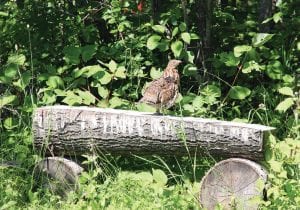Minnesota’s ruffed grouse spring drumming counts were higher than last year across most of the bird’s range, according to a report released by the Minnesota Department of Natural Resources (DNR).
“The grouse population is probably still near the high end of the 10-year cycle because drumming counts this spring were between the values observed during 2009 and 2010,” said Mike Larson, DNR research scientist and grouse biologist. “Drum counts from the last three years haven’t followed the same smooth pattern as during the previous two peaks in the cycle, but relatively small changes in the index may be due to factors other than the density of grouse.”
Those factors could include weather, habitat conditions, observer ability and grouse behavior. Ruffed grouse populations, which tend to rise and fall on a 10-year cycle, are surveyed by counting the number of male ruffed grouse heard drumming on established routes throughout the state’s forested regions.
This year observers recorded 1.7 drums per stop statewide. The averages during 2009 and 2010 were 2.0 and 1.5 drums per stop, respectively. Counts vary from about 0.8 drums per stop during years of low grouse abundance to about 1.9 during years of high abundance.
Changes in drumming counts compared to those during 2010 were not statistically significant. The averages, however, increased 18 percent in the northeast survey region, the core and bulk of grouse range in Minnesota, to 1.9 drums per stop. They also increased 16 percent to 2.1 drums per stop in the northwest and 32 percent to 0.4 drums per stop in the southeast. Grouse counts decreased 17 percent to 0.8 drums per stop in the central hardwoods region.
Minnesota frequently is the nation’s top ruffed grouse producer. On average, 115,000 hunters harvest 545,000 ruffed grouse in Minnesota each year, making it the state’s most popular game bird.



Loading Comments